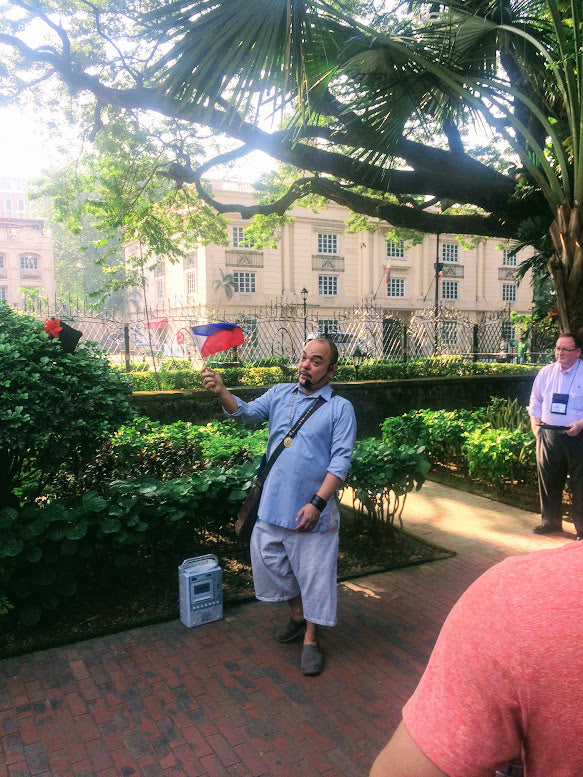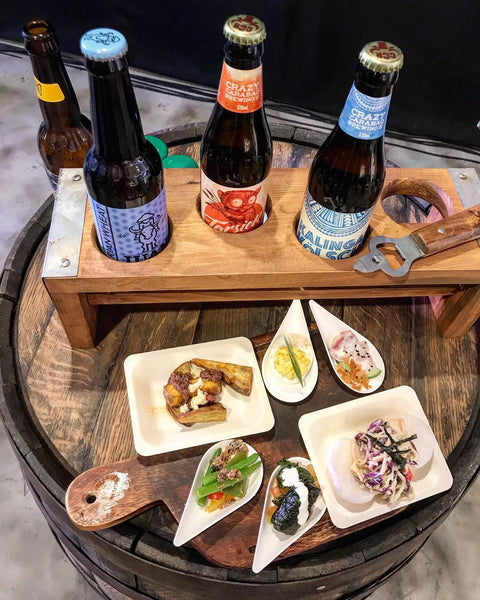When planning your next trip to the Philippines, you might pick up a guidebook or google a few blog posts about where to go. Almost all of them will advise you to skip Manila, the country’s capital, and head to the Boracays or Palawans instead. Even Filipinos themselves will tell you, “there’s nothing worth seeing in Manila - it’s crowded, noisy, polluted, and the traffic is blah blah blah.”
We’re not gonna lie.
Manila IS all of those things, but it’s SO much more.
As a balikbayan (a Filipina living abroad), I didn’t know much about the Philippines before I returned home for the first time at the age of 22. My relatives filled my head with horror stories about Manila, which I believed until Jérôme and I actually stayed in the city ourselves in 2012. It’s a bustling place and a little overwhelming, but Manila is a real glimpse of the Philippines - raw and full and vibrant.
We loved our time in the city, and now we stay for weeks at a time to meet with our Cambio & Co. artisan partners. This year will be our fourth visit to Manila and we can’t wait.
Here are four big reasons why you shouldn’t skip Manila next time you’re in the Philippines.
1. Manila Is Full of Culture & History
Manila was once known as the ‘Pearl of the Orient’, known for refined culture and elevated taste, prior to it becoming razed by US bombings during WWII. Before all of that, it was the site of rebellion against the Spanish. And even before that, Manila was a major settlement area for Chinese migrants. The history in this city is vast.
When you find yourself in Manila, one of the first things you should do is book a tour with Carlos Celdran. Be warned: he’s controversial, but very thought-provoking and extremely entertaining. He even says it directly on his website: “This is performance art in the guise of a walking tour.”

Through Celdran’s tour, you’ll learn about the rich history of Manila and how it went from being the most promising city in Asia, to being bombed to rubble, and to rebuilding itself into the city today. You’ll also get to discover what we mentioned in a previous blog article: Intramuros has an history as beautiful and tragic as the city itself. It’s the perfect way to orient yourself in Manila and to understand the context of the city you’re travelling in.
Once you finish the tour, make sure to hit up the National Museum and the Ayala Museum (my personal favourite), both full of rich information and beautiful exhibits. Manila is one of the oldest cities in the Philippines, so you can bet there’s lots to learn.
And when it comes to culture, you’ll never run out of events to attend. There is always something happening in the city so make sure to take a look at Nolisoli’s events calendar or Mynila's Events list for ideas.
2. The Food
At first glance, you might think Manila’s food offerings only include street stall vendors, Jollibee, or generic mall restaurants. Don’t be fooled though - there’s a growing local and independent food scene growing, and it’s something you don’t want to miss!
Whenever Jérôme and I are in the city, we opt to rent out an Airbnb for three or four weeks in the district of Mandaluyong. Most people will tell you to stay in Makati, the city’s most affluent district, but we prefer the more low-key and less expensive Mandaluyong instead. Plus, it’s becoming known as the city’s more hip district, home to several independent restaurants (our favs: Locavore Kitchen X Drinks and The Wholesome Table), and local cafes. Manila is fast becoming a foodie destination, with tons of gastroparks to satisfy every craving!
One of my favourite evenings Jérôme and I spent in Manila were around Mandaluyong, when we decided to explore one of the district’s food parks in Kapitolyo. We had a great evening trying out inventive new foods like nitrogen ice cream and oreo cookie waffles! We also noticed that everyone else was around our age or younger, so this definitely seemed like a more trendy spot.
There’s even a growing craft beer and brewery scene within Manila, as well as a farm-to-table and conscious eating movement to support Filipino farmers. It’s still a challenge to stay completely with plant-based diet here, but it’s becoming easier than ever to travel as a vegetarian or vegan within Manila. Be sure to also hit up the Legazpi Sunday Market for an assortment of international foods.

3. The Local Craft and Maker Scene
All over the world, the ‘Etsy trend’ (an emphasis on handmade, artisan, and local makers) has hit - and Manila has not been immune. Every time we visit Manila, we always take a few days to visit various artisan markets and local maker fairs, of which more and more seem to crop up (and we love it!).
If one-of-a-kind pieces and supporting Filipino entrepreneurs are your thing, pay a visit to Common Room PH. They’ve curated a collection of independent, homegrown Filipino brands (of which many are our partners) and make it easy to buy pasalubong (souvenirs) while supporting Filipino talent. There's also Philippine Artisan Trade for a sustainable lifestyle, shop and drink experience in the center of Makati.

Local food and local brew while you shop local at Philippine Artisan Trade
We love that there’s also a burgeoning movement to grow appreciation of FIlipino indigenous craft and culture, evidenced by major events like Artefino, Manila FAME, and smaller conscious community markets such as the MUNI market and the Good Trade PH.
For a long time, there’s been a stigma against products made in the Philippines (it’s one of the reasons we decided to create Cambio & Co. in the first place). So it’s really encouraging to see a bigger push amongst younger Filipinos who want to support emerging Filipino talent, while also supporting indigenous crafts and tradition.
4. The Growing Community of Ethical Brands and Consumers
Finally, no Cambio & Co. list would be complete without mentioning the growing eco-ethical consciousness taking hold within the Philippines, particularly within the country’s capital.
Manila is home to several of our ethical fashion and community partners, some of whom have storefronts available for you to visit. Our partner Rags2Riches even hosts weekly workshops where you can learn to weave directly from their community artisans. You can also pay a visit to our partner AKABA, the makers of our bags that showcase indigenous textiles, who have store locations at various malls. In the near future, AKABA even hopes to open a fully transparent factory that is open to visitors in Manila.
Rags2Riches Weaving Workshop
Other notable spots you can visit to support ethical Filipino brands and entrepreneurs include, but are not limited to: the ECHO Store, Human Nature, and Tesoros Philippine Handicrafts (check out the ANTHILL collection).
If that seems like a lot for you to schedule and organize yourself, checkout MAD Travel, a social enterprise that works with marginalized communities through social tourism and they offer a tour of Metro Manila!
So ignore conventional wisdom and add Manila to your list. You won’t regret it!
*Disclaimer: None of the recommendations in this article are sponsored. They are purely based on our personal experiences. However, we do partner with several community partners within Manila and mention them throughout the article.
Gelaine Santiago

Gelaine is a social entrepreneur, an online storyteller, and a passionate advocate for diversity and ethics in business. She’s the co-founder of Cambio & Co., an e-commerce fashion company working with Filipino artisans to celebrate Filipino craftsmanship, culture, and heritage. Gelaine is also one of the founders of Sinta & Co., the world’s first conscious Filipino wedding boutique. She was named one of RBC’s Top 25 Canadian Immigrants of 2019. Find her on Instagram @gelainesantiago and www.gelainesantiago.com




Leave a comment